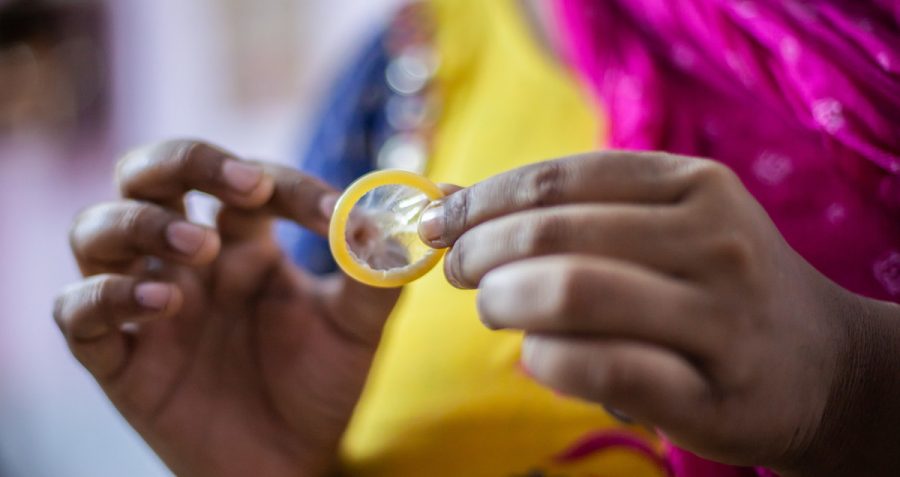New report reveals progress, gaps and opportunities to meet 2025 HIV prevention targets

A new report from the UNAIDS Global HIV Prevention Coalition (GPC) reveals progress on the global framework for action on prevention in 38 focus countries.
Eleven GPC countries showed more consistent progress on HIV prevention than countries outside of the Coalition, showing that with strong leadership and sustainable HIV prevention and treatment programmes, governments can accelerate action towards achieving the 2025 prevention targets.
“Progress is a result of your collective efforts and partnership country governments, civil society communities, and partners across the globe,” said Angeli Achrekar, Deputy Executive Director Programme, UNAIDS. “We need to address head-on the behavioural and societal barriers and inequalities faced by women and key populations in accessing prevention and more enabling social norms and laws.”
Despite welcome progress, the report shows that people from key populations and adolescent girls and young women are still experiencing high rates of new HIV infections.
The UNAIDS report is a real testament to the work communities and civil society do. They often do this in difficult environments and the risk is increasing because of the rise in harmful laws.Fionnuala Murphy, Head of Global Advocacy, Frontline AIDS
Progress needs investment and political will
According to the latest UNAIDS data from 2022, there were 1.3 million new HIV infections globally with 4,000 young women and adolescent girls (aged 15 – 24 years) getting HIV every week, with 3,100 infections occurring in sub-Saharan Africa.
The report emphasised that the HIV response needs a multi-faceted approach to make a significant reduction in infections.
“It’s about policy makers. It’s about providers. It’s about peers and sexual partners,” said Mitchell Warren, Executive Director of AVAC and the GPC co-chair. “It’s about being person-centred. If we can’t work through that and do it well and make these choices possible, the numbers of new infections won’t decline as rapidly as we need them to.”
Throughout the launch, speakers also reiterated why communities must play a critical role in holding governments to account for their prevention commitments, whilst acknowledging that a lack of funding for and recognition of civil society organisations will have a detrimental impact on future progress.
“The UNAIDS report is a real testament to the work communities and civil society do. They often do this in difficult environments and the risk is increasing because of the rise in harmful laws,” said Fionnuala Murphy, Head of Global Advocacy, Frontline AIDS.
Data and accountability
Frontline AIDS’ United for Prevention programme supports civil society, community networks and coalitions to hold governments and other stakeholders to account on their progress in meeting national and global HIV prevention commitments, as set out in the Global HIV Prevention 2025 Road Map.
In a series of 10 HIV Prevention and Accountability reports, Frontline AIDS and community partners provide a community perspective on the national response in India and nine countries in Africa. The reports show that people have limited access to prevention options, a finding mirrored in the GPC report which found that whilst PrEP use has increased, there are only 2.4 million users against the target of 10 million.
“We still need to lobby for the introduction of different pre-exposure prophylaxis (PrEP) technologies,” Janet Mugambi, Monitoring and Evaluation Officer, LVCT Health, Kenya, a partner in the United for Prevention programme, said. “We have the dapivirine ring which we have introduced in the study and now we’re lobbying for the introduction of CAB-LA [injectable PrEP]. We need to ensure that everybody is covered when it comes to prevention options.”
Toyin Chukwudozie, Executive Director of Education as a Vaccine, Nigeria, and fellow United for Prevention partner, echoed her comments: “There has been progress. Even though people are hesitant about CAB-LA, its introduction is moving and we’re happy about that. In line with government’s policy to make all prevention methods available along with CAB-LA, we are also hoping it will increase oral PrEP access and use.”
The GPC report reveals that whilst countries such as Angola, which decriminalised homosexuality in 2020, have seen a 40% reduction in new HIV infections amongst adults (aged 15 and over) in the last 12 years, other countries are lagging behind.
The report concludes and recommends that countries can advance progress on HIV prevention, by ending harmful laws and policies, increasing funding for new and existing prevention methods, including condoms, and supporting civil society to hold governments accountable for their commitments.
The GPC progress report serves as a valuable advocacy tool, providing a much-needed update on national HIV prevention responses. However, this report should not be read in isolation. Government-generated data can only tell us so much, and gaps in official reporting also limits our understanding.
“To get the full picture, the update should be read alongside Frontline AIDS’ HIV Prevention Accountability Reports”, said Clare Morrison, Senior Advisor: HIV Prevention, Frontline AIDS. “These reports speak directly to communities’ experiences, capturing success and challenges and providing concrete recommendations which communities would like to see addressed.”
Tags
HIV preventionHIV Prevention CoalitionUNAIDS

